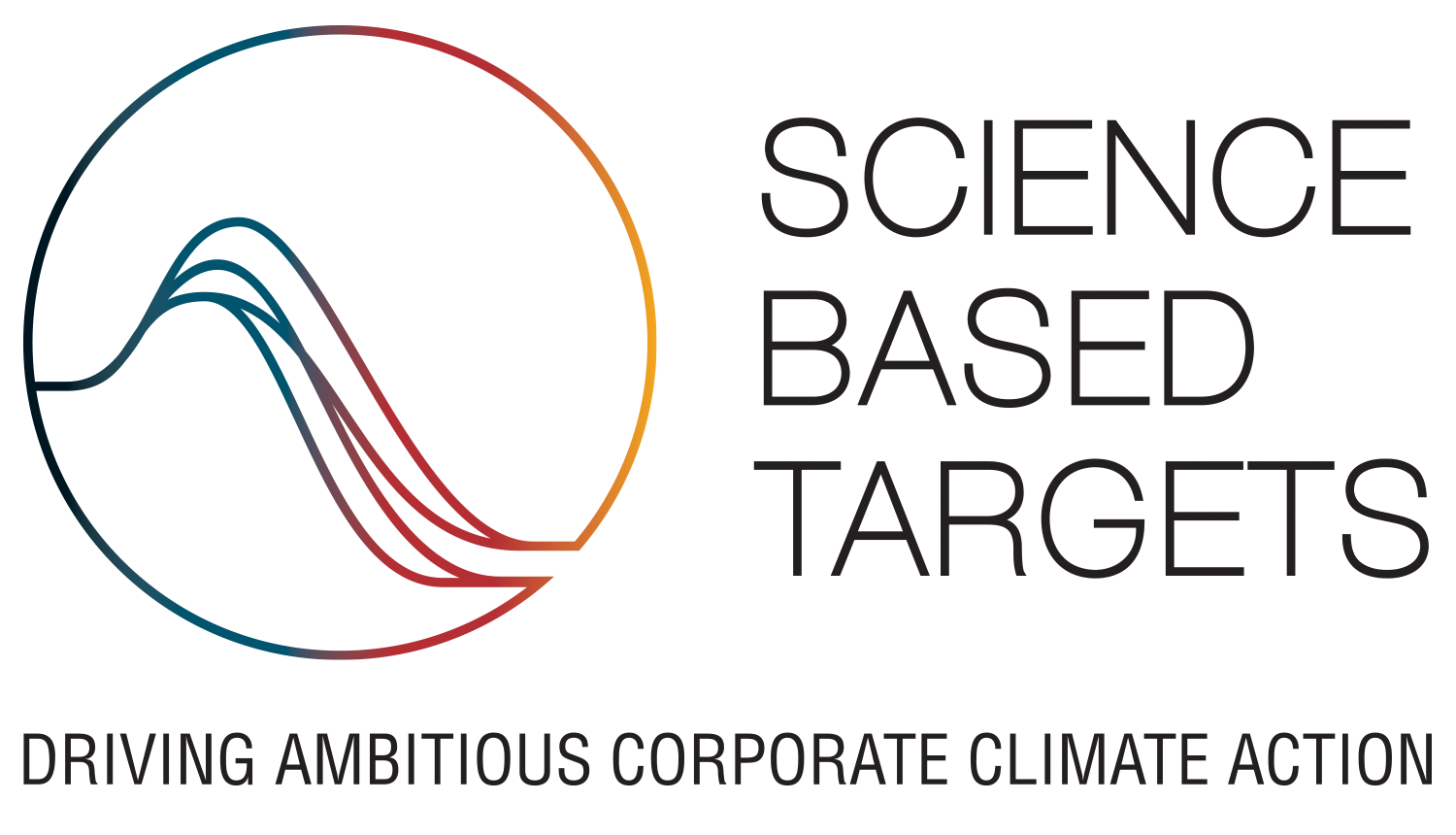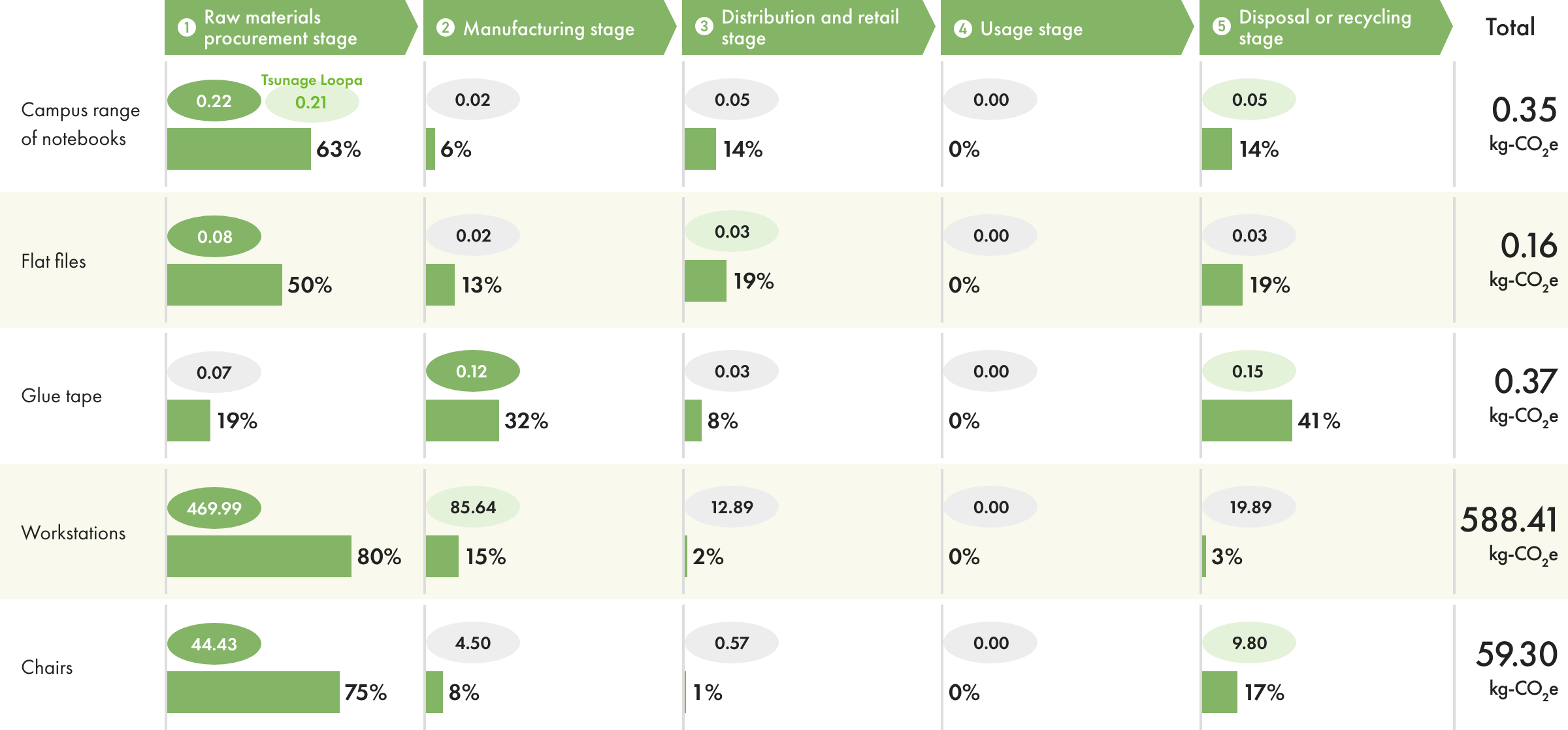ENVIRONMENT
CLIMATE CHANGE: ACTIONS
Science-Based Targets Initiative (SBTi) Validation for Our Greenhouse Gas Emissions Reduction Targets
We recognize climate change as a vital management issue. We have positioned “Respond to the climate crisis” as one of our material issues and are working to reduce our greenhouse gas emissions (Scopes 1 and 2).
We have obtained short-term SBTi validation for the targets listed below as stepping stones for achieving carbon neutrality by 2050.
- Reduce total scope 1 and scope 2 greenhouse gas emissions by 42% between 2022 and 2030
- Reduce greenhouse gas emissions from the scope 3 category “purchased goods and services” by 25% between 2022 and 2030
- Have suppliers, responsible for 12.5% of our emissions from “purchased goods and services,” set SBTi goals by 2028
We will expand our greenhouse gas reduction efforts to include scope 3 emissions (supply chain emissions) and work with our suppliers to support the carbon transition.

Calculating Our GHG Emissions Volume
Calculating GHG Emissions Volume for 31 KOKUYO Group Companies
We are expanding inclusion in the calculation of emissions volume through our business activities as necessary for reducing emissions in our supply chain.
In 2024, we disclosed the estimated emissions of 30 consolidated subsidiaries, including four newly consolidated that year.
Please see the Sustainability Databank on our website for emissions volumes
GHG Emissions Reduction
Renewables Shift
Electric power is the major source of our scope 1 and 2 emissions. We are working to shift our supply to renewable energy sources in order to reduce our own greenhouse gas emissions within our supply chain (scopes 1 and 2). We shifted the following domestic sites to renewable energy between 2022 and 2024: the Mie Plant (which manufactures office furniture) in 2022; KOKUYO Product Shiga (which makes notebooks) in 2023; and in 2024, the Shibayama Plant (which manufactures room partitions), KOKUYO MVP’s Tottori Plant (which manufactures file binders) and The Campus (our core live office in Shinagawa, Tokyo). These efforts resulted in a 54.1% reduction in our emissions in Japan in 2024 versus the 2013 level.
Overseas, in India we have installed solar power plants at KOKUYO Camlin’s Tarapur and Patalganga plants, and expanded the area of solar panels at Patalganga in 2024. These efforts resulted in an increase in the weighting of non-fossil fuel energy sources in our group’s electric power consumption to 39% by 2024.
- 2024 Commitment Goal, Result
- Scope 1 and 2 Emissions
- Electric Power Consumption, Non-Fossil Fuel Weighting
Energy Saving
We are working to improve our energy efficiency alongside the transition to renewable energy sources. Energy intensity per unit of sales shows how much power we consume for every unit of sales value. This has continued to improve from a 2022 peak.
Energy Intensity per Unit of Sales
We had anticipated that plants would use more energy with the rise in production, but we managed to reduce energy use by improving operations and upgrading production equipment.
| Company | Base | % reduction |
|---|---|---|
| KOKUYO (Malaysia) | Malaysia Plant | -2.2% |
| KOKUYO Supply Logistics | Osaka Nanko Distribution Center | -3.8% |
| Ibaraki Distribution Center | -3.8% | |
| Chubu Integrated Distribution Center | -3.1% |

KOKUYO Marketing has achieved a sharp reduction in power consumption at many of its 22 offices throughout Japan by insisting that air-conditioning is set at an appropriate temperature, improving working practices through having its staff leave the office on time and utilizing co-working spaces, and implementing a turn-down-the-lights campaign. This success is backed by the provision of environmental education to its staff. The company raised environmental-consciousness among its employees through initiatives such as annual e-learning and the disclosure of each individual office’s energy consumption.
| Company | Base | % reduction |
|---|---|---|
| KOKUYO Marketing | Tachikawa Office | -21.0% |
| Nagano Office | -11.3% | |
| Kyoto Office | -6.0% | |
| Wakayama Office | -16.7% | |
| Kumamoto Office | -5.3% | |
| Miyazaki Office | -13.8% |

Product CO2 Visualization
The KOKUYO Group measures the CO2 expenditure of its products through their whole lifecycle, from creation through disposal or recycling.
Hitherto this has been an independent endeavor. However, the attention to the carbon footprint of stationery, office supplies and office furniture in the 2023 Act on Promoting Green Purchasing and other developments have led to expectation that demands for product carbon footprint (PCF) calculation will increase. In response, in March 2024, the All Japan Stationery Association formulated and published “rules for calculating the carbon footprint of stationery and office supplies” and the Japan Office and Institutional Furniture Association (JOIFA) formulated and published “calculation rules by product: office furniture.”
Also, the Osaka Prefectural Government instituted at the occasion of Expo 2025 in Osaka a “model business for visualizing CO2 emissions throughout an entire supply chain” project to support companies in calculating and reducing their PCF. Its aim is to further promote efforts to visualize CO2 emissions. We have participated in this model business, calculating PCF for our core products.
The results of this calculation exercise are as follows.
Carbon Footprint Calculation for KOKUYO Products

For reference: See here for the results of the “carbon footprint system pilot program” implemented in 2010 (run by METI and related ministries and agencies).